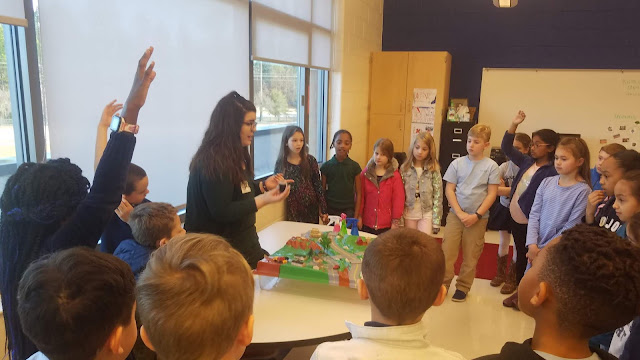Back in the Grey Area, students looked at both chlorine and acid rain and new suspects in the mystery of the dying fish. First they role-played a reenactment of a meeting of the Gray Area Board of Supervisors where our suspect and owner of the water slide was consulted. He shared results from chlorine tests conducted down the river from his business. Students took a closer look at the results from the chemical tests and performed a bio-assessment of their own on a macro-invertebrate called daphnia to check the more long term effects of chlorine on the area. They also examined some secret documents that provided further clues as to how the varying data could all add up. Next, students looked at air pollution and acid rain as the possible culprits. They investigated pH testing and built their knowledge of acids and bases so they could apply it to the waters of Gray Area. Finding the Gray Area rain to be strongly acidic, they then tested the various bodies of water in the region. They found some interesting results in that only one river in the area maintained an acidic pH. This lead to further investigation into the geology of the area and the effects of acid on aquatic ecosystems. The owners of local factories as well as commuters were questioned and added to our pool of suspects.
Here is our data: 50, 71, 58, 72, 49, 47, 55, 64, 110, 60, 88, 90, 90, 55, 75
































































